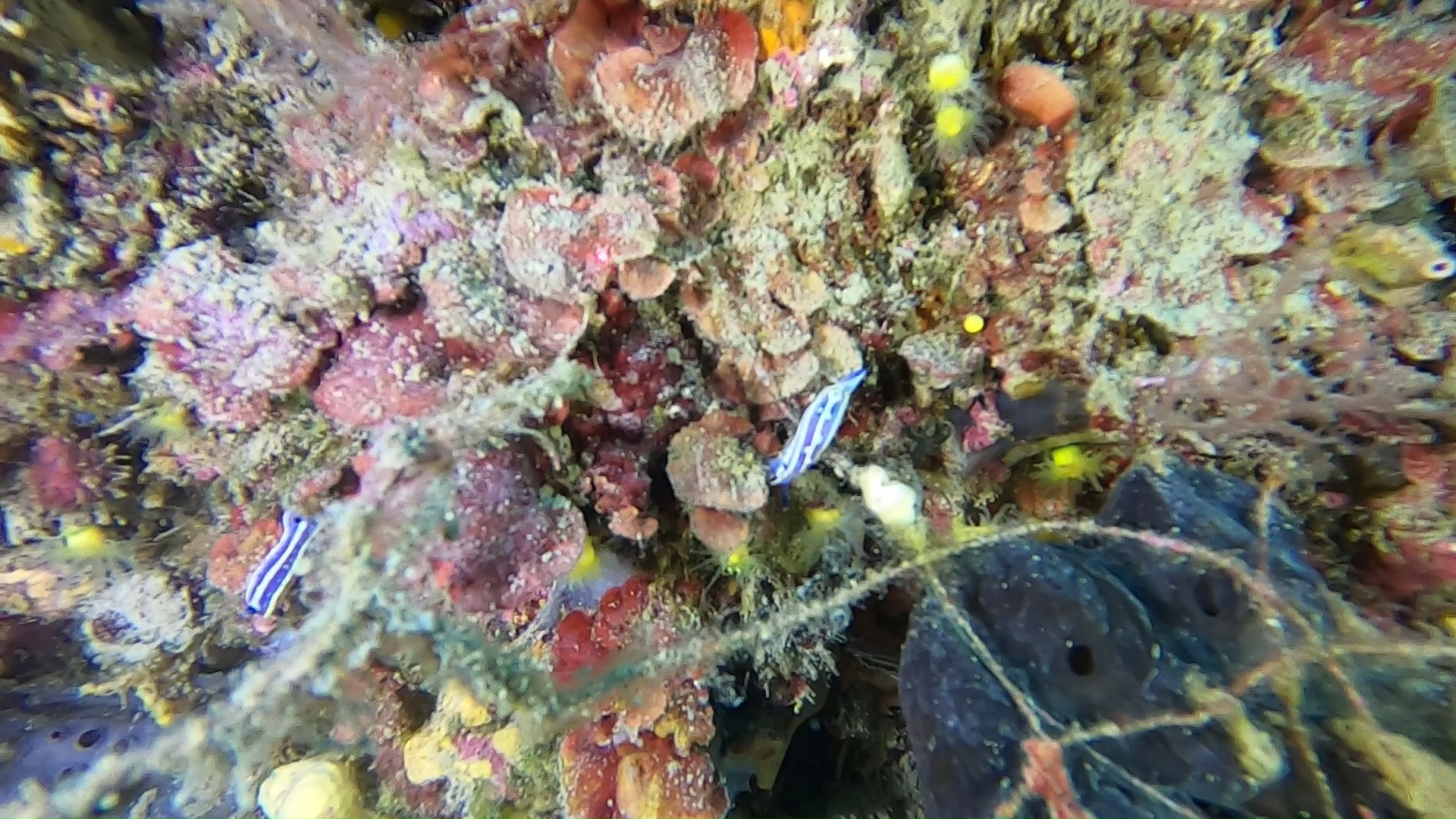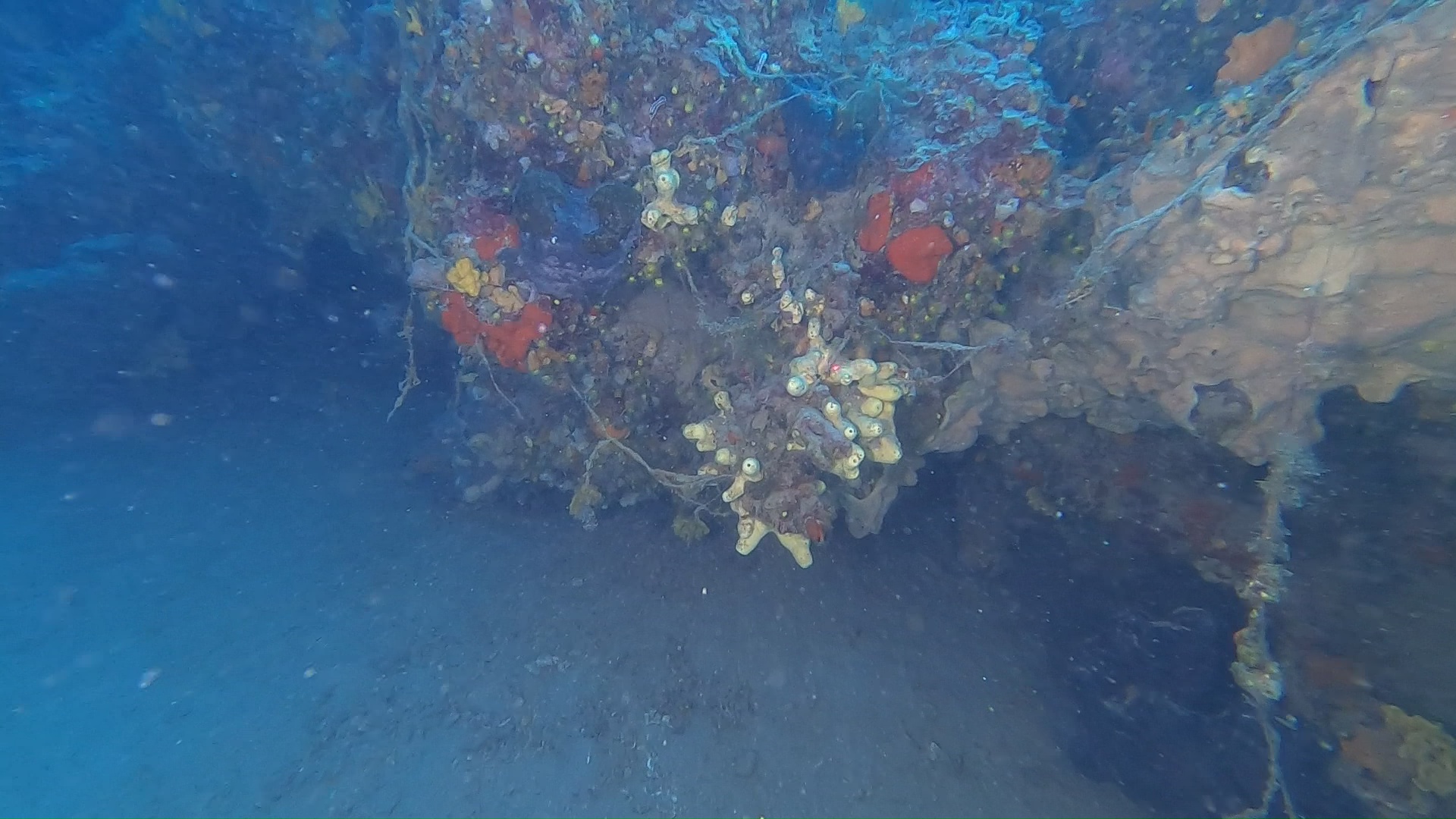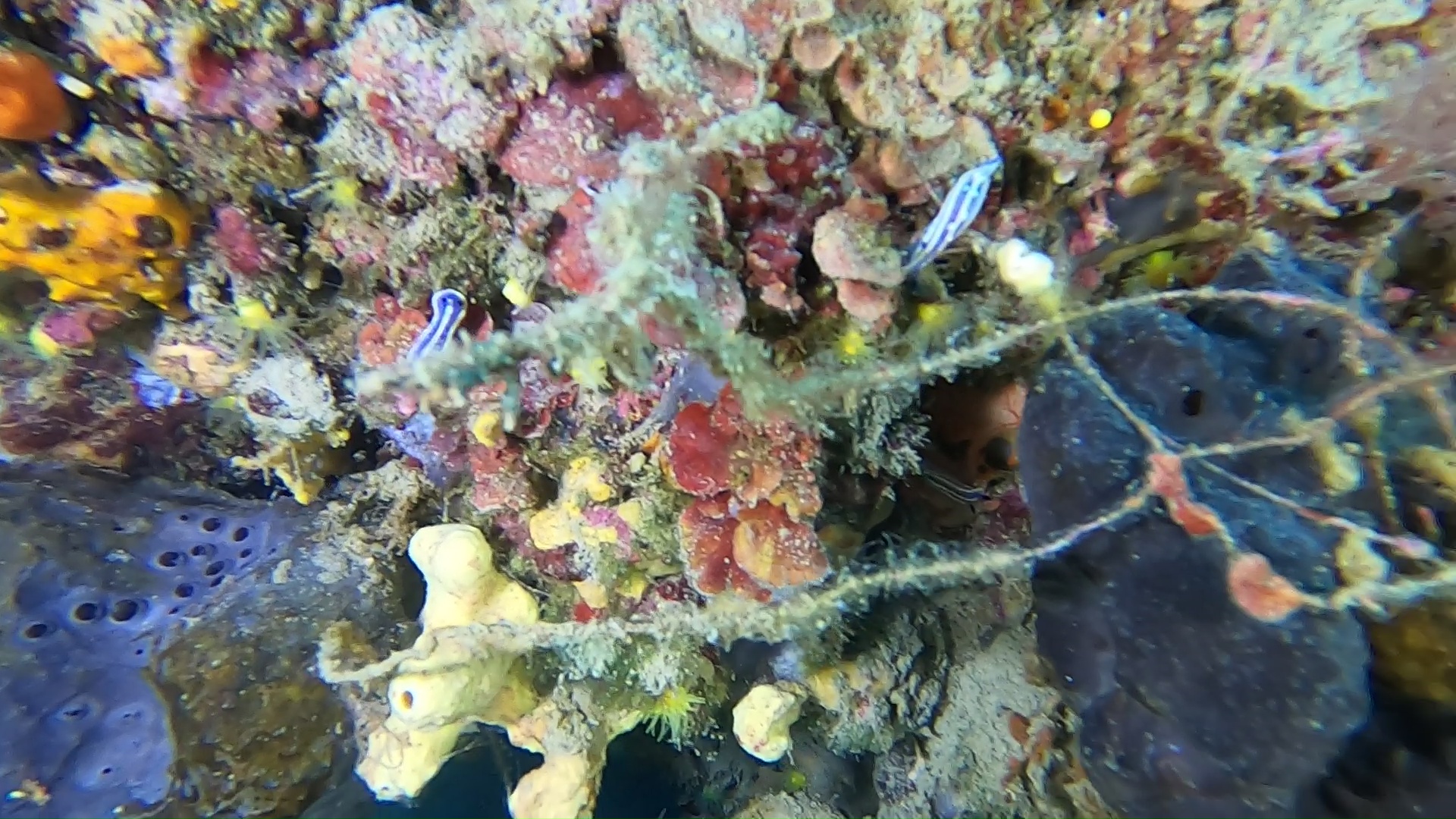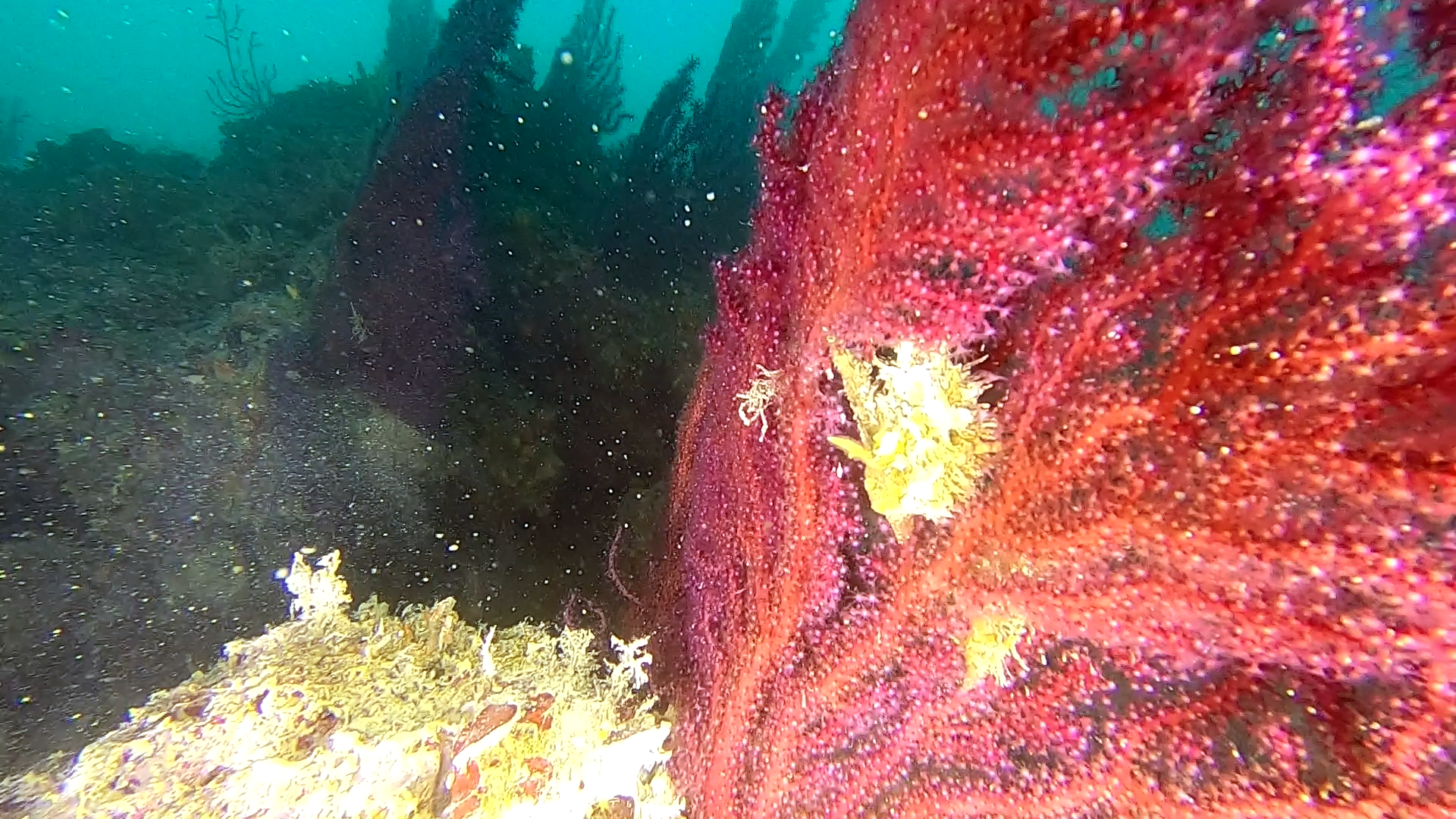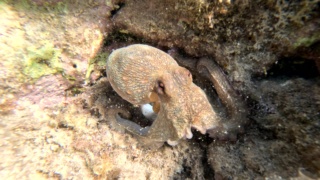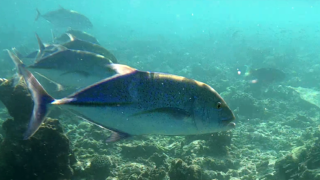We found these three specimens of Felimare tricolor on a rocky and coralligenous bottom at a depth ranging from 45 to 50 meters. These animals are quite common in the Mediterranean and are also difficult to photograph and film with normal cameras due to their small size. What is striking in this video is not so much the presence of at least three specimens in very few square decimetres that leads us to think that they are probably being reproduced, but the presence of fishing lines abandoned by sport fishermen.
By now we are used to finding everything on the seabed: wrecks, grabbed nets, lost trawl nets, etc. etc. Finding these beautiful specimens among a tangle of nylon threads that will remain there for who knows how long and that will turn into dangerous microplastics that will inevitably become part of the food chain and in the environment, however, must make us reflect.
Very soon we will make an article on this, because the fact of abandoning anything in the sea is not only a problem of professional fishermen who, due to an accident, may or may not deliberately lose their nets, but find abandoned meters of fishing lines of fishermen. sportsmen, who therefore fish for pleasure or “sport”, frankly I think it is hardly justifiable.
We hope that these images can make all those who love the sea and the environment and dear fishermen reflect and think before you lower your lines and your nylon lines into the sea, think about what you do.
The tricolor dorid (Felimare tricolor (Cantraine, 1835)) is a species of the genus Felimare, belonging to the Chromodorididae family of nudibranch molluscs. It has now been described by various authors as belonging to the genus Chromodoris, now to the genus Goniodoris, to the genus Doris, to the genus Mexichromis, Hypselodoris and also to the genus Glossodoris.
Habitat and distribution
Common in the Mediterranean Sea, Eastern Atlantic Ocean, on rocky or muddy bottoms from 10 to 50 meters deep.
Description
Body of blue color, elongated, with a white or yellow dorsal line, which does not exceed the rhinophores. There are often shades of blue between the center line and the edge of the coat, with yellow bands. Rhinophores of the same color as the body, branchial tuft of the same color. Up to 35mm.
Biology
Behavior
To defend itself, it secretes toxic substances.
Supply
It feeds on sponges both of the genus Cacospongia and of the species Dysidea avara and Dysidea fragilis.
https://it.wikipedia.org/wiki/Felimare_tricolor
 English
English Italiano
Italiano
